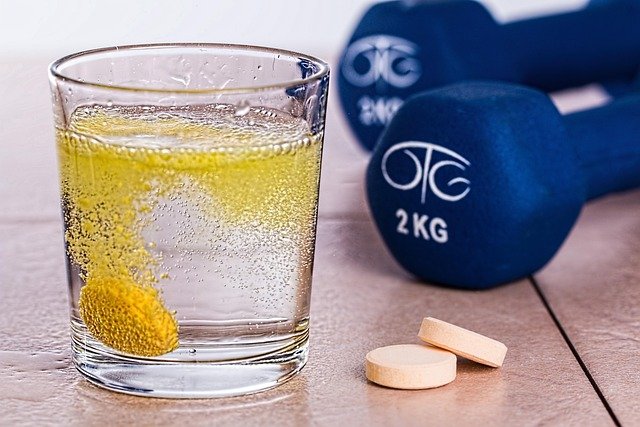Nutrition Timing to Support Tissue Repair and Exercise Performance
Timing what and when you eat can influence how effectively your body repairs tissues and performs during exercise. This article outlines practical, evidence-informed timing strategies for protein, fluids, electrolytes, and movement to support skin recovery, muscle strength, endurance, flexibility, and mobility while aligning with sleep and circadian patterns.

Nutrition Timing to Support Tissue Repair and Exercise Performance
Nutrient timing refers to structuring the intake of food, fluids, and electrolytes around activity, rest, and daily rhythms to support tissue repair and exercise performance. Practical timing focuses on providing amino acids and hydration when tissues are most receptive, supporting skin and muscle recovery while preserving endurance and strength during training. The guidance below is evidence-informed and framed for routine use alongside sensible tracking of results.
This article is for informational purposes only and should not be considered medical advice. Please consult a qualified healthcare professional for personalized guidance and treatment.
How does nutrition support tissue repair and skin health?
Protein and certain micronutrients are central to tissue repair, including skin regeneration. After exercise or a skin-stressing event (sun exposure, abrasion), consuming a moderate amount of high-quality protein within a few hours helps supply amino acids needed for collagen synthesis and cellular repair. Pairing protein with vitamin C–rich foods supports collagen formation, while balanced carbohydrate intake can replenish glycogen that immune cells and fibroblasts use during healing. Regular nutrition across the day maintains a steady supply of building blocks for ongoing skin and tissue maintenance.
When to consume protein for strength and recovery?
Distributing protein evenly across meals—approximately 20–40 grams per meal depending on body size—supports muscle protein synthesis more effectively than concentrating most protein in a single meal. Consuming protein within the first one to two hours after resistance training can enhance short-term recovery and rebuild strength, particularly when combined with a modest carbohydrate source to restore energy stores. For evening training sessions, a protein-containing snack before bed can support overnight repair without disrupting sleep for most people.
What role do electrolytes and hydration play in endurance?
Hydration and electrolytes are key for endurance and preventing performance-limiting cramps or fatigue. Start activity well-hydrated and replace fluids lost through sweat during prolonged exercise. For sessions under an hour, water is typically sufficient; for longer or higher-intensity workouts, electrolyte-containing beverages help maintain sodium and potassium balance and support neuromuscular function. Matching intake to sweat rate—tracked across several sessions—reduces the risk of over- or under-consuming fluids and improves steady endurance performance.
How does movement timing affect mobility and flexibility?
Scheduling movement and flexibility work around nutrition and body temperature can improve outcomes. Light carbohydrate and hydration before mobility sessions can increase perceived energy and reduce stiffness, while a protein-containing meal after targeted mobility or resistance training supports connective tissue adaptation. Frequent short movement breaks during the day support joint lubrication, circulation, and skin perfusion—small consistent bouts of activity often produce clearer mobility gains than a single infrequent session.
How do sleep and circadian rhythm influence recovery?
Sleep quality and circadian timing strongly shape recovery processes. Many repair mechanisms—hormonal release, protein synthesis, and tissue remodeling—occur preferentially during sleep. Aligning substantial meals earlier in the evening and avoiding large late-night meals can help some people maintain better sleep. When training times vary, aim to keep consistent sleep windows and adapt nutrient timing (e.g., protein after late sessions) to support overnight repair without disrupting circadian-driven recovery signals.
How can routine and tracking optimize timing strategies?
Establish a routine that coordinates meals, hydration, and movement with your training schedule and daily obligations. Tracking simple metrics—training load, perceived recovery, sleep duration, body weight changes, and sweat loss—helps refine timing choices. For example, if endurance performance dips on long sessions, tracking hydration and electrolyte intake relative to sweat rate can reveal needed adjustments. Iterative tracking supports personalized timing that balances recovery, strength gains, and skin or connective tissue health.
Conclusion
Effective nutrient timing emphasizes consistent protein distribution, strategic carbohydrate and electrolyte intake around workouts, and synchronization with sleep and movement routines. Simple practices—post-exercise protein, hydration matched to sweat losses, and maintaining a steady daily routine—support tissue repair, mobility, strength, and endurance. Personal tracking and modest adjustments based on individual response allow these principles to be tailored to different activities and schedules.





